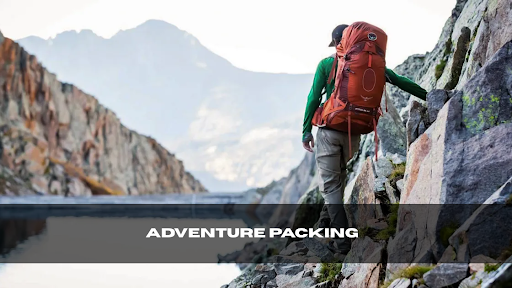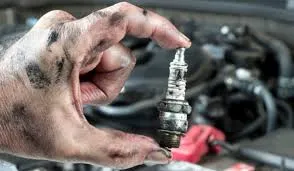Adventure Packing: Gear That Won’t Let You Down

Nothing ruins an epic adventure faster than discovering your gear is wet, missing, or broken when you need it most.
I learned this lesson at 14,000 feet in the Andes when I discovered my backup headlamp batteries were dead, my rain jacket was at the bottom of an inaccessible pack, and my emergency first aid supplies were scattered across three different compartments.
That night, shivering in a sudden storm, I made a promise: never again would poor gear organization compromise my safety or experience.
After seven years of adventure travel across six continents – from Arctic expeditions to jungle treks to desert crossings – I’ve developed systems that keep essential gear accessible, protected, and ready when survival depends on it.
The Adventure Packing Paradox
Adventure travel creates unique organizational challenges that casual travel never faces:
Environmental Extremes: Gear must function in conditions that destroy normal luggage
Safety Criticality: Poor organization can literally be life-threatening
Weight Sensitivity: Every gram matters when you’re carrying everything
Access Speed: Sometimes you need gear immediately, no matter where it’s packed
Durability Requirements: Gear faces abuse that would destroy normal travel items
The paradox? You need more specialized gear, but you can carry less total weight. The solution lies in strategic organization that maximizes accessibility while minimizing bulk.
The Adventure Zone System
Traditional packing advice collapses in adventure environments. Instead, I use a zone-based system organized by urgency and access frequency:
Zone 1: Survival Essentials (Immediate Access)
- First aid kit and emergency medications
- Emergency shelter and warmth layers
- Water purification and emergency food
- Communication devices (satellite communicator, etc.)
- Multi-tool and emergency repair kit
Zone 2: Daily Operational Gear (Easy Access)
- Navigation tools and maps
- Weather protection (rain gear, sun protection)
- Daily nutrition and hydration
- Lighting systems and power sources
- Core clothing layers
Zone 3: Base Camp Equipment (Structured Storage)
- Sleeping system and shelter
- Cooking equipment and fuel
- Extra clothing and backup gear
- Bulk consumables and supplies
- Non-essential comfort items
Zone 4: Deep Storage (Compressed/Protected)
- Long-term food supplies
- Repair materials and spare parts
- Documentation and valuables
- Seasonal gear not currently needed
- Resupply items for later stages
Weather-Proofing Your Organization
Adventure environments destroy gear through moisture, dust, temperature extremes, and physical abuse. Your organization system must protect gear while maintaining access.
Waterproofing Strategy:
- Critical gear: Waterproof containers with positive seals
- Daily items: Water-resistant pouches with drainage capability
- Backup systems: Completely separate waterproof storage for redundant gear
- Electronics: Faraday pouches that also provide water/dust protection
Temperature Protection:
- Batteries: Insulated storage that maintains operating temperature
- Electronics: Cushioned compartments that protect from thermal shock
- Medications: Temperature-stable storage with backup cooling/warming
- Water systems: Insulated storage prevents freezing or overheating
The Layering Organization Philosophy
Adventure clothing requires complex layering systems that must be quickly accessible as conditions change. Poor clothing organization can lead to hypothermia, heat exhaustion, or worse.
Base Layer Organization:
- Moisture-wicking materials in quick-access compartments
- Extra base layers protected from contamination
- Easy access for quick changes during temperature swings
Insulation Layer Strategy:
- Compressible insulation in dedicated compression storage
- Quick-access for sudden weather changes
- Backup insulation in waterproof storage
- Different insulation weights for varying conditions
Shell Layer System:
- Weather protection in immediately accessible locations
- Backup shells in protected storage
- Specialized shells (breathable vs. waterproof) clearly organized
- Emergency shelter integration with shell layer storage
Technical Gear Organization
Adventure travel involves specialized technical equipment that requires specific organizational considerations:
Electronics and Power:
- Charging systems compatible with available power sources
- Backup power with realistic capacity planning
- Cables and adapters in organized, accessible storage
- Weather protection for all electronic components
Navigation and Communication:
- Primary navigation tools in immediately accessible storage
- Backup navigation in separate, protected storage
- Communication devices with backup power systems
- Emergency communication tools in survival kit
Safety Equipment:
- First aid supplies organized by urgency and access frequency
- Rescue equipment (whistle, signal mirror, etc.) in accessible locations
- Emergency shelter and warmth systems in quick-access storage
- Personal protection equipment properly maintained and accessible
Food and Water Systems
Nutrition and hydration become critical safety factors in adventure environments. Organization affects both convenience and survival capability.
Water Strategy:
- Primary hydration system for daily use
- Backup water storage and purification
- Emergency water supplies in protected storage
- Water treatment supplies easily accessible
Food Organization:
- Daily nutrition: Easy access for regular fueling
- Emergency food: Protected storage with long shelf life
- Cooking supplies: Organized for efficiency and safety
- Waste management: Systems for Leave No Trace principles
Adventure nutrition requires specific organizational considerations. During my 21-day Patagonia trek, proper food organization meant the difference between enjoying meals and struggling with spoiled supplies.
The Compression Challenge
Adventure gear faces a unique compression challenge: items must be compressed for transport but quickly expandable for use. Quality compression systems become critical.
Compression Strategies for Adventure Travel:
- Clothing: Aggressive compression for transport, quick expansion for use
- Sleeping systems: Maximum compression without damaging insulation
- Shelter: Compact storage with rapid deployment capability
- Backup gear: Ultra-compression for rarely-used but critical items
During my month-long Himalayan expedition, space efficiency was critical for porter weight limits.Compression Packing cubes like those from CarryCubes proved essential for managing bulk while maintaining gear organization and protection.
Adventure-Specific Compression Needs:
- Durable compression that withstands repeated cycles
- Weather-resistant compression systems that protect contents
- Quick-access compression that doesn’t require complete unpacking
- Compression systems that maintain gear functionality
Emergency Access Planning
Adventure environments can require immediate access to critical gear under stressful conditions. Your organization system must work when your life depends on it.
Emergency Access Principles:
- Muscle Memory: Critical gear location must be automatic
- Dark Access: Organization must work without light
- Stressed Access: System must work under physical and mental stress
- Injured Access: Consider access with limited mobility or hand function
Emergency Kit Organization:
- First Aid: Organized by urgency and skill level required
- Shelter: Immediate access to emergency warmth and protection
- Signaling: Rescue equipment immediately accessible
- Communication: Emergency communication tools protected but accessible
Resupply and Logistics
Extended adventures require resupply planning and organization systems that work across multiple environments and timeframes.
Resupply Organization:
- Pre-positioned supplies: Organized for easy identification and deployment
- Mail drops: Standardized packing for reliable delivery
- Local procurement: Organized lists and backup plans for purchasing supplies
- Return logistics: Organization for shipping equipment home vs. continuing
Multi-Stage Adventure Planning: Each stage of extended adventures requires different gear priorities. During my trans-Andes cycling expedition, desert sections required completely different organization than mountain passes.
Gear Maintenance and Repair
Adventure environments are hard on equipment. Organization must include maintenance systems and repair capabilities.
Maintenance Organization:
- Daily maintenance: Quick cleaning and inspection routines
- Weekly maintenance: Comprehensive gear inspection and care
- Repair kit: Organized tools and supplies for field repairs
- Replacement planning: Identifying gear approaching end-of-life
Field Repair Strategy:
- Multi-tools with adventure-specific capabilities
- Repair materials organized by gear type
- Instruction cards for complex repairs
- Backup systems for critical gear that might fail
The Psychology of Adventure Organization
Poor organization in adventure environments creates stress that compounds with physical and environmental challenges. Conversely, excellent organization provides psychological confidence that enhances performance and safety.
Mental Benefits of Adventure Organization:
- Reduced Anxiety: Knowing you can access critical gear reduces stress
- Increased Confidence: Well-organized gear enables bolder adventures
- Better Decision Making: Less time managing gear means more time assessing conditions
- Emergency Readiness: Confidence in gear access improves emergency response
Learning from Failures
My best organizational insights came from spectacular failures:
The Soaked Electronics Disaster (Iceland): Learned to separate electronics into multiple waterproof systems The Frozen Water Crisis (Alaska): Developed insulation strategies for liquid systems The Missing First Aid Emergency (Peru): Created standardized emergency kit organization The Gear Explosion (Patagonia): Learned compression systems that maintain organization
Each failure taught me that adventure organization isn’t just about convenience – it’s about safety and success.
Investment in Adventure-Grade Organization
Adventure environments destroy budget gear quickly. Quality organization systems become safety equipment, not just convenience items.
Adventure-Grade Requirements:
- Weather resistance beyond normal travel needs
- Durability for extreme use cycles
- Quick access under stress and poor conditions
- Repair capability and long-term reliability
For serious adventurers, investing in comprehensive organization solutions like CarryCubes makes sense when your safety depends on gear accessibility and protection. The engineering quality proves worthwhile when failure isn’t an option.
Training Your Organization System
Like any safety system, adventure organization requires training and practice:
Practice Scenarios:
- Night access: Practice finding critical gear in darkness
- Emergency simulation: Access first aid under time pressure
- Weather practice: Test organization systems in simulated storm conditions
- Fatigue testing: Practice organization when exhausted
Advanced Adventure Techniques
Modular Organization: Create gear modules that can be quickly reconfigured for different adventure phases Redundancy Planning: Critical systems backed up with separate, protected alternatives Weight Optimization: Continuous gear evaluation and replacement with lighter alternatives Skill Integration: Organization systems that support developing adventure skills
The Transformation
Implementing these adventure organization systems transformed my relationship with challenging environments. Instead of fighting my gear, I started trusting it. Instead of worrying about access, I focused on the adventure itself.
The difference between organized and disorganized adventure travel isn’t just comfort – it’s capability. When your organization systems work flawlessly, you can push further, climb higher, and explore deeper with confidence.
Adventure travel pushes every system to its limits. Your organization system either supports your ambitions or limits them. Choose systems worthy of your adventures.
Fellow adventurers: What’s your most critical gear organization lesson? Share your adventure organization wins and disasters in the comments!




